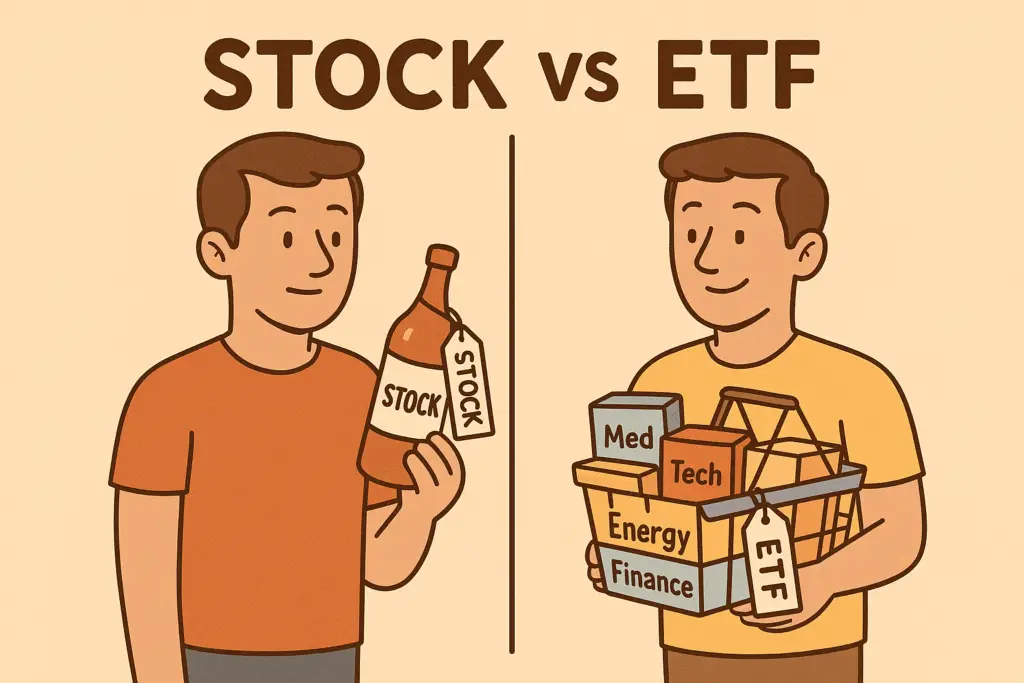A Beginner’s Guide to Earning Passive Income If you start investing thinking you’ll get rich overnight, you’re in for a disappointment. Investing isn’t a cheat code at life that lets you skip you straight to financial independence. If it were, we’d all be sipping cocktails on a yacht by now. But it can help you grow your wealth steadily over time. How much, and how quickly, depends largely on the risk you’re willing to take, and yes, a bit of luck. In this post, I’ll explore what dividends are and the role they play in generating passive income. I’ll share what to look out for as a beginning investor and explain dividends in a way that even your elderly neighbor, or your Nan, could understand. So, what is dividend? A dividend is a way a company may reward you for owning its stock. It’s typically paid out from the company’s profits, most often in cash, though occasionally as extra shares. Think of it as a bonus for being a part-owner and sharing in the company’s success. Dividends are one of the most powerful, yet often misunderstood, aspects of investing. As a beginner, understanding this concept can unlock a simple and effective path to building long-term wealth. Whether you’re aiming to grow a retirement portfolio or just looking for some extra income, dividends can be a reliable cornerstone of your strategy. They’re paid on a set schedule, which depends on the company and its location. Some pay monthly, others quarterly, and a few just once a year. (To be clear: monthly doesn’t mean you’re getting more money, just smaller pieces more often.) Think of it like this: imagine the company’s annual dividend as a pitcher of water. Whether it’s poured into one big glass (once a year), four medium glasses (quarterly), or twelve shot glasses (monthly), the total amount stays the same. It’s just delivered in different-sized servings. Dividends are most common among mature, stable companies. High-growth firms, on the other hand, typically reinvest their profits to fuel expansion rather than paying out to shareholders. You’ll usually encounter two main types of dividend sources: Why Do Companies Pay Dividends? One of the most common questions about dividends is why a company chooses to pay them, after all, it just costs them money, right? The reasons aren’t always obvious at first glance, but there’s a lot of strategy behind it. First, dividends are a way to return value to shareholders, a “thank you” of sorts. By sharing a portion of their profits, companies show that they’re financially healthy and committed to keeping shareholders happy. Regular dividend payments can also send a positive signal to the market: it suggests confidence in future earnings. And if there’s one thing investors care about, it’s future value. Of course, the reverse also holds true: if a company cuts or eliminates its dividend, it might be a sign of trouble ahead. Here are a few other key reasons companies choose to pay dividends: Q: Why don’t companies just use the money to pay big bonuses? A: They could, but it’s not always a smart move, and it comes with trade-offs: In short, paying dividends is a way for companies to show strength, reward investors, and maintain a balanced, investor-aligned strategy, especially when they’ve moved past their early, high-growth years. A dividend tells a story: about how a company views itself, its growth future, and its relationship with you, the investor. Why do dividends matter to an investor? Dividends can be a powerful tool for building long-term wealth, especially if you reinvest them. Unlike capital gains, which require selling your shares, dividends give you actual cash without reducing your holdings. Here’s why they matter: In short: dividends let your portfolio work for you quietly in the background, providing income, buffering risk, and building value over time. How to evaluate a dividend stock Not all dividend stocks are created equal. Some are steady performers, while others might look attractive on the surface but carry more risk than reward. To choose dividend stocks that align with your strategy, you’ll want to evaluate them based on a few key metrics: Think of these metrics as ingredients in a recipe, each one adds flavor and balance to your dividend portfolio. Ignore them, and you could end up with a financial dish that doesn’t taste quite right. How to find a good dividend stock Finding a good dividend stock isn’t overly complex. As with most investing decisions, a few reliable tools and basic rules of thumb can help guide your choices. • Use stock screeners: Platforms like Yahoo Finance or TradingView allow you to filter stocks by key metrics such as dividend yield, price-to-earnings (P/E) ratio, market capitalization, and more. This can narrow your search and highlight potential candidates quickly. • Check sector strength: Certain industries—like utilities, consumer staples, and healthcare—tend to offer more stable and reliable dividends due to their consistent demand and cash flow. • Review company fundamentals: Look for companies with strong earnings history, manageable debt levels, and capable leadership. A little research—often just a quick online search—can give you a solid snapshot of a company’s financial health. As a general rule, avoid chasing the highest-yielding stocks. A high yield can sometimes signal that a company is under pressure, with a falling stock price or unstable outlook. It’s usually better to prioritize quality and consistency over size when it comes to dividends. And remember, don’t fully rely on metrics, sometimes, plain common sense is your best guide. Common mistakes to avoid with dividend investing Dividend investing is beginner-friendly but not without its pitfalls. A few common traps can quietly undermine your strategy, so being aware of them helps you make smarter choices. Lack of diversification: Even “safe” dividend stocks can underperform or face headwinds. Spread your investments across sectors, geographies, and asset types to reduce risk. Don’t put all your dividend eggs in one basket. Tax considerations for dividends Dividends are income, and like most income, they’re taxed. However,




